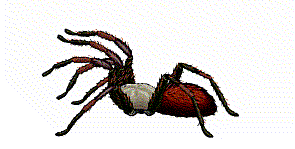Phonics/Writing
Preparation:
Using letters from a Scrabble game, write the words "pumpkin," "stem," and "orange" on a piece of paper. Trace around the letters. Then write the words "pumpkin," "stem," and "orange" in the boxes. I added lines next to the words for writing practice.
Materials
Paper
Scrabble letters
Pencil
Teaching:
Letter Learner (Learning letters and letter sounds):
1. Every preschool session play one of the letter learning games from this site.
2. As child places letters on the paper sound out the phoneme (sound) of that letter.
Emergent Reader (Knows letters and letter sounds):
2. As child places letters on the paper sound out the phoneme (sound) of that letter.
Emergent Reader (Knows letters and letter sounds):
1. Have child find and sound out each letter as they place it on the paper.
2. Have child guess word, and if they are unable to figure out word, sound it out together slowly until they can figure out what the word says.
The child's paper should look like this:
3. Have the child, using correct penmanship, write the words.
Reading
Preparation:
Make a poster with poem “Pumpkin”
"Pumpkin, Pumpkin,
Round and fat
Turn into a jack-o-lantern
Just like that.
Boo!
Materials:
Poem
Orange crayon
Yellow crayon
Teaching:
Letter Learner:
1. Read the poem together 2-3 times. At the end of the poem make your best "jack-o-lantern face."
2. Have your child find and color all the ‘P’s” orange.
3. Say the word pumpkin together. Listen to the two /p/ sounds.
4. Read it through again. Point to each word as you say it.
5. Help child point to words with you. (This helps them recognize sounds and words).
Emergent Reader:
1. Read poem together 2-3 times.
2. Have child color the word “pumpkin” orange.
3. Have child point to and say any other words they know. They can color those words, too.
5. Say poem again pointing to words.
6. Hand child a pointer (wand, pen or pencil with a star attached to it, etc.) and as you say the poem together they point to each word as they say it. (This is important in helping them connect written word with what they are saying).
Math
Preparation:
Seeds from Yesterday's pumpkin, washed, and dry
Materials
Seeds
Teaching:
1. Count the pumpkin seeds together. Make piles of ten seeds as you count. When child gets tired of counting, stop. Don't torture them with continuing to count after they've lost interest. Be positive and say, "Wow! We counted 46 seeds! That's a lot of counting, and there are still more! There are a lot of seeds in pumpkins!"
Book of the Day: Pumpkins by Gail Gibbons
1. Read the book to your child, talking about what you are learning as you read.
Science
Materials
Fruits
Teaching:
1. Have your child compare and contrast the pumpkin to the other fruits. Talk about size, shape, color, texture, etc.
Art
Art
Preparation
Cut orange construction paper into 2 inch strips
Blow up a balloon into a small ball, tie off.
Mix together on medium size plate approximately 1/4 cup glue and 1/4 cup water (just eyeball it, you don't need to be exact.)
Blow up a balloon into a small ball, tie off.
Mix together on medium size plate approximately 1/4 cup glue and 1/4 cup water (just eyeball it, you don't need to be exact.)
Materials
paper
balloon
glue mixture
balloon
glue mixture
yarn
Teaching:
1. Have your child dip the strips of paper into the glue/water mixture. We put several strips in the mixture and let them soak until thoroughly wet.
2. Apply the strips, one at a time, to the balloon, layering pieces over one another. Like this:
3. When the balloon is covered with the paper, tie a piece of yarn to the top, take the balloon outside, tie it so the balloon is hanging and let dry overnight. You may want to put something under the balloon because it can drip. If you want to dry the pumpkin on your counter overnight realize it may flatten a little.
2. Apply the strips, one at a time, to the balloon, layering pieces over one another. Like this:
3. When the balloon is covered with the paper, tie a piece of yarn to the top, take the balloon outside, tie it so the balloon is hanging and let dry overnight. You may want to put something under the balloon because it can drip. If you want to dry the pumpkin on your counter overnight realize it may flatten a little.































